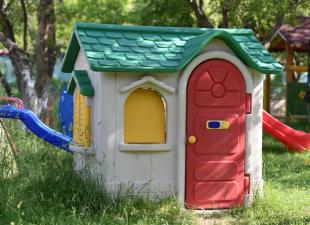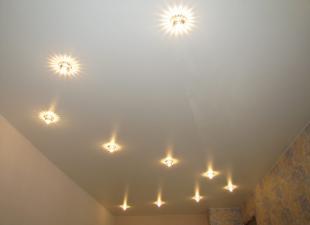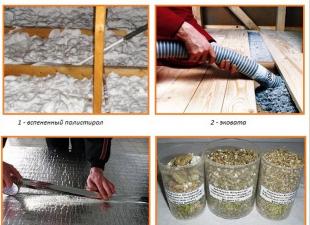Renovation of an apartment is a long and laborious task that requires a lot of knowledge and skills. Especially when it comes to renovating the kitchen. This is one of the most important places in the house where you spend a lot of time. And each housewife has her own ideal idea of her. Constantly faced with the inconvenience of the wrong choice, no one wants. Naturally, not only design is important here, but functionality and convenience.
Therefore, one of the important issues is the choice of countertops. And here many factors are taken into account: from quality to financial ability. The complexity of the choice lies in the variety of materials on the market, a wide range of colors and interesting design finds. A good worktop should meet all the requirements and fulfill its task. What is the best countertop to choose for the kitchen so that it meets all the necessary requests? To do this, you need to know some of the features of kitchen countertops.
What an ideal countertop should be
Undoubtedly, in order to choose the perfect countertop, it is worth deciding and understanding what qualities it should have. Comfort and durability are the top priorities. A large price range allows you to choose a material based on your financial ability.
Therefore, it is worth paying attention to the following aspects:
- water resistance and moisture resistance;
- resistance to mechanical damage;
- resistance to high temperatures;
- design;
- ease of care;
- resistance to various acids and dyes;
- the possibility of repair;
- price;
- harmful substances in the composition of the material;
- long service life.
Paying attention to all these criteria, you can choose the ideal option for the kitchen., Which will delight, and give pleasure from day to day. It is worth choosing those criteria that are most important in the design of the kitchen, and focusing primarily on them.
Types of countertops
There are several types of kitchen countertops, they differ in their physical properties and the composition from which they are made.
According to the materials, the following types are distinguished:
- laminated with plastic from chipboard;
- MDF laminated with an HPL layer;
- artificial acrylic stone;
- artificial stone with quartz filler;
- natural stone (granite, marble);
- solid wood with high strength;
- ceramic tile;
- steel.
What are the positive and negative aspects of this or that material? Let's look at the features of each separately.
Laminated with plastic from chipboard
The worktops are made from high pressure plastic treated particle board. This is one of the most popular species in our country. It has its pros and cons.
The first include:
- low price;
- a large selection of colors;
- fast production, simple and cheap installation;
Of course, there are not so many positive qualities, but the price is fundamental. Due to its low cost, such a coating is used most often.
It also has certain disadvantages:
- unable to resist dyes and corrosive liquids;
- possible swelling from moisture;
- not heat resistant;
- the possibility of deformation and color change;
- the material has harmful resins;
- fragility.
Whether or not to choose such a product depends on the goal. If you need a temporary and inexpensive kitchen or plan to change the countertop, then this material is fine. When striving for durability and high quality, it is worth considering other options, however, they will already be more expensive. Laminated chipboard is, in principle, a good choice in the budget class.
HPL laminated MDF board
Here, in the manufacture, they take an MDF board and laminate it with a high-strength material, all the same HPL, everything is covered with a protective layer on top. MDF differs from chipboard by a higher chip density and the absence of harmful impurities.
This material also has its pros and cons. The first include the following:
- affordable price;
- absence of harmful impurities in the material;
- a large selection of colors;
- resistance to fungus and microorganisms.
The negative points are:
- low resistance to dyes and acids;
- not heat resistant;
- the possibility of bloating with prolonged contact with moisture;
- deformation from strong blows.

Such material is of good quality and affordable price. Of course, it is not perfect and is unlikely to last very long, but with a small budget it is worth taking a closer look at it.
Artificial acrylic stone
The material of this plan is created by a bunch of fine acrylic chips, color impurities and acrylic resin. Such a mixture is poured into the form necessary for design implementation. This allows you to expand the possibilities and create any tabletop, without any glues and joints.
But, of course, there were some drawbacks:
- high price;
- the possibility of mechanical damage;
- the possibility of damage by acid and dye;
- not heat resistant;
- complex installation;
- long production time.

The main feature of this material is the ability to choose any shape and color. But many housewives note the constant appearance of scratches on such a surface. Because of this, it is advised not to choose dark colors. When buying such a product, you should ask the manufacturer about the radiation background of granite, ask for the necessary documents.
Video: acrylic stone countertops
Pros:
- the appearance resembles a real stone;
- immune to acids and dyes;
- heat resistance;
- color does not change over time;
- environmental friendliness and hygiene;
- long service life.
Minuses:
- the most expensive material;
- small color palette;
- joints and connections are noticeable;
- impossibility of repair;
- great weight.
![]()
Natural stone (granite, marble)
It is clear that in this case the basis for the countertop will be granite or marble. It is just distinguished by its high wear resistance.
Consider the advantages of such a countertop for the kitchen:
- resistant to moisture, temperature, various acids and dyes;
- color fastness;
- hygiene;
- long service life.
And, accordingly, certain disadvantages:
- high cost;
- small choice of colors;
- joints and seams;
- heavy weight;
- cannot be restored and repaired;
- the possibility of radiation (from granite).
One of the most wear-resistant and durable materials. But it is, of course, difficult to install and has a high price. Natural stone should be used when you intend to make a significant financial investment in the kitchen and at the same time will not change the design for a very long time.

Solid wood with high strength
From the name itself, it becomes clear that the tabletop is made of solid wood, characterized by high strength indicators. Usually such species are used as oak, walnut, ash, bamboo, iroko. The most important aspect in this use is the interaction with moisture and mechanical stress.
Of the positive aspects, it is worth noting the following:
- pleasant appearance and tactile sensations;
- competent care and varnishing make the material waterproof;
- affordable price;
- the ability to constantly update the appearance due to grinding;
There are also downsides:
- weak heat resistance;
- susceptibility to moisture levels;
- susceptibility to acids and dyes;
- the need for constant care;
- high moisture promotes the development of fungi and microorganisms;
Ceramic tile
In Russia, this type is rare, but there are still amateurs of such material. Tabletops of such a plan are laid out with tiles or tiled mosaics. Most often, chipboard is taken as a basis.
Pros:
- heat resistance;
- resistance to moisture, acids and dyes;
- average price range;
- resistance to mechanical stress;
- various design and color solutions.
Minuses:
- grout seams accumulate food debris;
- the complexity of the repair;
- seams are susceptible to dyes.
This type of coating directly depends on the quality and type of tiles. Due to the laborious work in the manufacture, this option is not popular in our country.


Of steel
At the mention of such material, canteens and other catering come to mind. But, despite the stereotype, you can make a beautiful designer thing. This material is often used in restaurants due to its unique properties.
Positive qualities include:
- durability and strength;
- resistance to dyes and acids;
- high hygienic performance;
- variety of variations;
- easy care.
The negative aspects include:
- not suitable for many styles of kitchens;
- high price;
- constant cleaning is required - prints and streaks remain.
This worktop looks perfect in loft, industrial, or high-tech kitchens. Glass countertops are very rare, but they are unpopular due to their fragility.
Installation and maintenance
The shape of the product must be chosen, focusing on the footage of the room and its layout. It is worth paying attention to the headsets, how they fit together. It is better for the kitchen to minimize the number of corners, otherwise it will interfere with movement. Experiment with the design, you can even consult with the professionals.
When choosing a countertop, it is worth considering the cost and complexity of installation. Each material, as described above, has its own characteristics and difficulties. It is better to fix the skirting board at the last moment, when all work with the kitchen is finished. It must be chosen correctly, because it is he who closes the gap between the wall and the countertop.
 parlini.ru Repair of an apartment, a summer residence and a house.
parlini.ru Repair of an apartment, a summer residence and a house.


